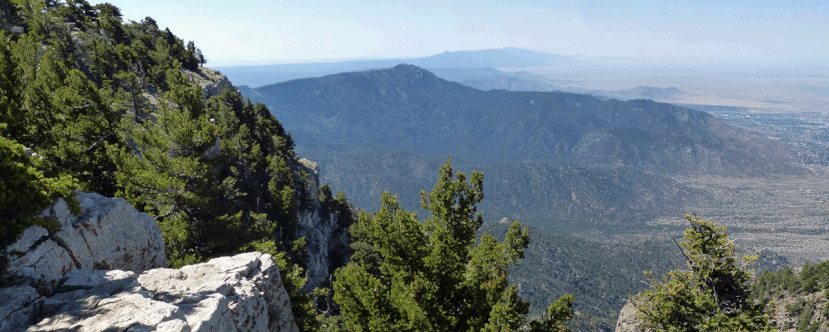This morning's Albuquerque Journal carried a story titled "Hiker dies in fall at White Rock Canyon." Hikers tend to be most worried about lightning or bears, but many hiking deaths are due to falls.
The Journal story went on to identify the victim as a 19 year old. "According to friends, [Trevor] Matuszak lost his footing in a steep portion of Hell's Hole and fell into the canyon."
Earlier this year, on May 26, the AP released a story about a different hiker whose body had just been recovered near Alamogordo. According to the N.M. State Police, "19-year-old David Morales was hiking with a teenage friend on the trails adjacent to the Tunnel Vista area when he fell into the canyon."
A June 7 AP story describes how a missing hiker, Linda Sanford, was found dead, "apparently the victim of a fall down an embankment."
On August 10, 2016, the Journal described how Diedre Tafoya (age 26) fell 40 feet off a cliff at the top of Sandia Mountain, and died. On March 21 of the year before, an unidentified 17 year old girl "seeking a better view while hiking the Spur Trail near Sandia Crest slipped and fell several hundred feet to her death."
The more you look into the causes of death outdoors, the more surprised you'll be at what actually kills people. A 2003–2007 study of deaths in U.S. national parks lists falls as the third leading cause of death. (Drowning and vehicle accidents are number one and two. The national parks see more deaths from suicides than from avalanches, heat or cold exposure, and wildlife combined.)
As always, I dwell on such tragedies in the hope that they'll provide lessons that keep the rest of us alive. The biggest lesson, I think, is to always be aware of the danger of falling; it's far more likely to hurt or kill you than a bear attack. Once that lesson is absorbed, the next step is to change your behavior accordingly.
First, when a trail runs next to a big dropoff, you need to think about what you're doing. And you really don't need to stand right at the cliff edge, to enjoy the view! Probably no coincidence that three of the five incidents I listed involved teenagers, but older people die from hiking falls as well. At the least, it's good to slow down and be careful. The situation might be downright unsafe for a person of your abilities, in which case there's no shame (only pride in having some sense) when you turn back.
Second, hiking poles are always a good idea. Even someone who's sure-footed 99.9 percent of the time might slip and start falling toward a dropoff. A pack's center of gravity is above your waist, and when you start falling over, the pack fights your attempts to stay upright. If you put a pole out to stabilize yourself, you don't need to put a foot out in the direction your torso and pack are trying to take you. An important option, since one foot off the trail might be enough to send you over the edge.
